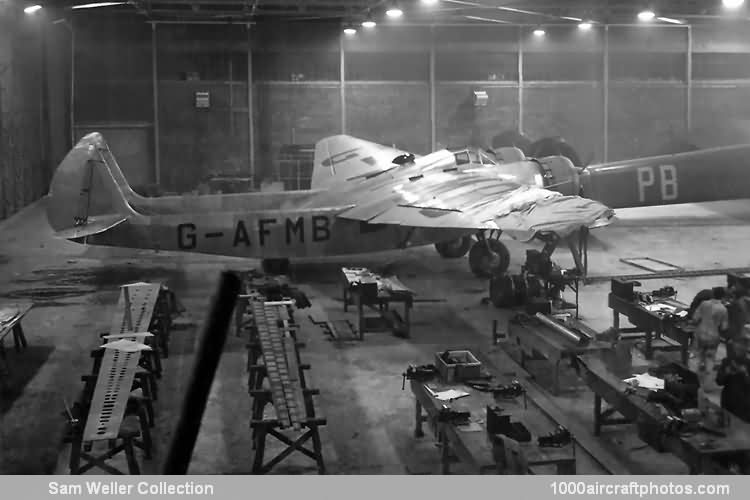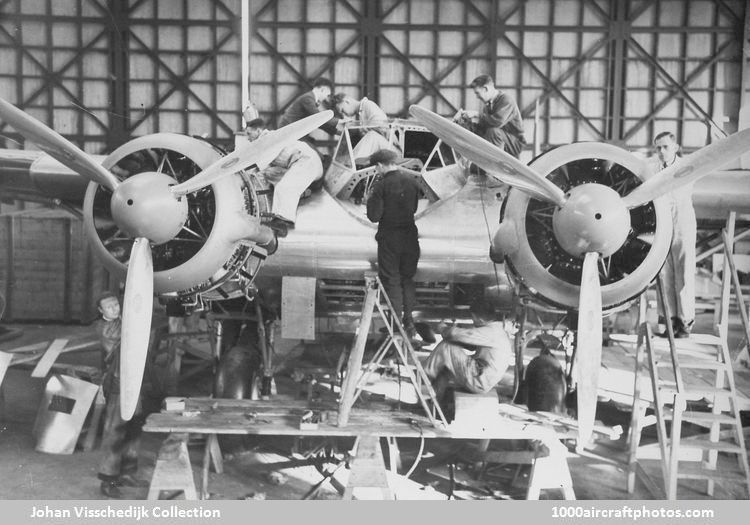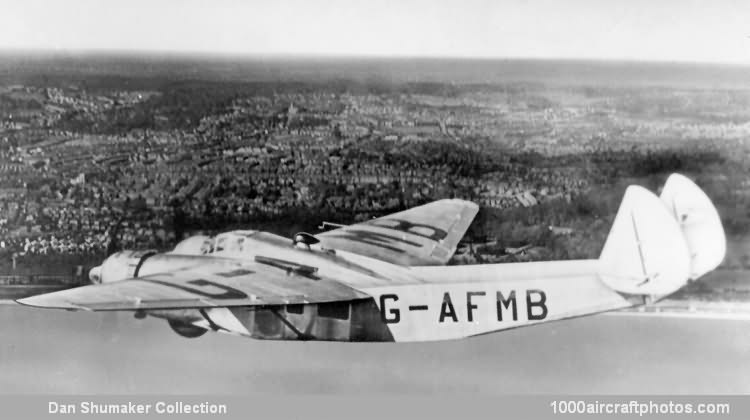09/30/2010. Remarks by
Johan Visschedijk: "The Cunliffe-Owen OA-1 was a British design based on the concept of the American Burnelli UB-14 'lifting fuselage' design.
Scottish Aircraft & Engineering Ltd., formed at Willesden, London, UK, June 18, 1936, proposed license building of the UB-14 in July 1936. It was called the Clyde Clipper, while in September 1936, the company advertised a military version as the 'British Burnelli Bomber Mark IV'. Scottish Aircraft & Engineering Ltd produced a full-size wooden mockup at their Wembley Scotia Works, but failed to get the UB-14 into production and receivers were appointed on July 26, 1937.
On August 9, 1937, B.A.O. Ltd. was formed, headed by Sir Hugh Cunliffe-Owen, chairman of the British American Tobacco Co. The company changed its name to Cunliffe-Owen Aircraft Ltd. in May 1938, and on January 23, 1939, new premises were opened at Eastleigh Airport, Southampton, Hampshire, where it was hoped the much-modified OA-1 version of the UB-14 would be put into production.
The OA-1 high-wing semi-cantilever all-metal monoplane bore resemblance to the UB-14, but was of different construction.
(
Johan Visschedijk Collection)
The airfoil-section fuselage of the OA-1 accommodated the passenger cabin and engine nacelles and formed the wing center section, this configuration prompted many to incorrectly class the type as a flying wing.
The aircraft was fitted with a fully retractable tail wheel landing gear and powered by two 740 hp Bristol Perseus XIVc nine-cylinder air-cooled radial engines. In common with normal Burnelli practice the OA-1 had a luxurious passenger cabin, fully sound-proofed and equipped with 15 super luxury Rumbold seats. The production version, the OA-1 Mk II, was planned to accommodate 20 passengers.
(
Dan Shumaker Collection)
Registered G-AFMB on November 22, 1938, the completed OA-1 made its first flight from Eastleigh on January 12, 1939, the eight-minute flight was carried out by Burnelli test pilot Clyde Pangborn. The OA-1 was subsequently doped silver overall and embarked on several months of test flying and received various improvements. In 1940 the OA-1 was sent to Martlesham Heath where it received its
CofA on November 27.
On May 31, 1941 the aircraft was impressed into RAF service but was not allocated an RAF serial number, as it was transferred to the FAFL (Forces Aériennes Françaises Libres, Free French Air Force) at Bangui in French Equatorial Africa (presently Central African Republic).
Deregistered on June 6, 1941, it left the UK the following day, flown by a four-men crew of the Air Transport Auxiliary, headed by pilot Flight Captain Jim Mollison. Staging through Gibraltar, Malta, Cairo, Wadi Halfa, Khartoum, El Fasher, El Ganeina, Fort Archambault and the aircraft reached Bangui on June 28.
Painted midnight blue, with the French tricolore on the rudders, French roundels on the wings, and a Cross of Lorraine (symbol of the FAFL in WW II) on the tail beams, it was subsequently used by the LAM (Lignes Aériennes Militaires, Militairy Air Lines) as a liaison aircraft. In 1943 and 1944 it made flights to the Mediterranean, including Egypt and Lebanon.
While flown by Lieutenant Tricot, the aircraft was damaged at Rayak, Lebanon, on June 16, 1944, subsequently it was transferred to El Kabrit Egypt, for repairs. This was the last time the aircraft was flown, it deteriorated at El Kabrit, and eventually perished in a bonfire celebrating the Allied victory on August 8, 1945."


